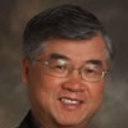Phase II study of induction chemotherapy with paclitaxel, ifosfamide, and carboplatin (TIC) for patients with locally advanced squamous cell carcinoma of the head and neck.
Palavras-chave
Resumo
BACKGROUND
This Phase II trial was conducted to determine the response rate, particularly of the primary sites, tolerability, and toxicity of induction chemotherapy of paclitaxel, ifosfamide, and carboplatin for patients with previously untreated locally advanced squamous cell carcinoma of the head and neck (SCCHN). We also hypothesized that improved complete response (CR) rates with the induction chemotherapy may render better survival rates with subsequently delivered definitive local treatment.
METHODS
All eligible patients with locally advanced SCCHN received two courses of induction chemotherapy and underwent repeated head and neck examination and computed tomography or magnetic resonance imaging scans. If the patients achieved responses (CR or partial [PR]), they received two more courses of chemotherapy before undergoing definitive local treatment. Induction chemotherapy consisted of paclitaxel (T; 175 mg/m(2) in a 3-hour infusion) on Day 1, ifosfamide (I; 1000 mg/m(2) in a 2-hour infusion) on Days 1-3 with intravenous mesna (200 mg/m(2) before and 400 mg/m(2) after ifosfamide), and carboplatin (C) using the Calvert formula for the area under the plasma concentration-versus-time curve of 6 on Day 1, repeated every 3-4 weeks. Prophylactic hematopoietic growth factors or antibiotics were not used in this study. Definitive local treatment was given based on the investigators' preference.
RESULTS
Fifty-four patients were registered and 52 patients were assessable for response to induction chemotherapy; 2 were not evaluable. After four courses of induction chemotherapy, the CR rates of the primary and lymph node sites were 60%, and 41%, respectively. For both primary and lymph node sites, there were 31% CRs and 50% PRs with an overall response rate of 81%. Five (9%) patients developed neutropenic fever, all of whom recovered with antibiotic therapy. Two (4%) patients had infection without neutropenia and recovered without any complication. Grade 3/4 thrombocytopenia and anemia occurred in three (6%) and four (7%) patients, respectively. Grade 3/4 fatigue developed in four (7%), arthralgia/myalgia in two (4%), peripheral neuropathy in two (4%), and orthostatic hypotension in two (4%) patients. One patient died of severe anaphylaxis although a maximized resuscitation effort was made. With a median follow-up of 22 months, the organ preservation rate was about 81% (42 of 52 patients). Although survival rates were not primary end points in this study, with a median follow-up of 22 months, 43 (83%) patients are still alive. Overall 1 and 2-year survival rates were 88% and 82%, respectively. Disease-free 1 and 2-year survival rates were 88% and 77% respectively.
CONCLUSIONS
TIC induction chemotherapy is associated with a high CR rate at the primary sites and with excellent survival and organ preservations rates with subsequently delivered definitive local therapy. The regimen was also well tolerated in the majority of patients. The TIC regimen should be developed further in the context of induction chemotherapy followed by concomitant chemoradiotherapy or with specific molecular targeted agents.



